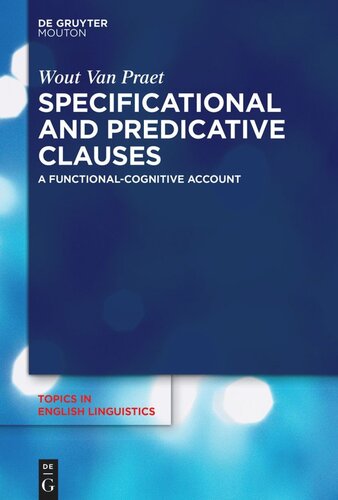

Most ebook files are in PDF format, so you can easily read them using various software such as Foxit Reader or directly on the Google Chrome browser.
Some ebook files are released by publishers in other formats such as .awz, .mobi, .epub, .fb2, etc. You may need to install specific software to read these formats on mobile/PC, such as Calibre.
Please read the tutorial at this link: https://ebookbell.com/faq
We offer FREE conversion to the popular formats you request; however, this may take some time. Therefore, right after payment, please email us, and we will try to provide the service as quickly as possible.
For some exceptional file formats or broken links (if any), please refrain from opening any disputes. Instead, email us first, and we will try to assist within a maximum of 6 hours.
EbookBell Team

4.1
20 reviewsIn studies of copular clauses, the relation between specificational and predicative clauses has been a contentious issue. While most studies agree on the analysis of predicative clauses, specificational clauses have sparked much debate. A key concern is how specificational clauses with indefinite ‘variable’ NP (e.g. "A popular holiday go-to is Rome") compare to, and contrast with, other copular clauses, especially specificational clauses with definite ‘variable’ NP (e.g. "The main can’t-miss in Italy is Rome") and predicative clauses with indefinite predicate nominative (e.g. "Rome is a great city"). This book addresses this concern by offering a functional-structural analysis of these three clause types in terms of their common characteristics and distinguishing features. The analysis of the clauses’ structure and meaning is substantiated by evidence from corpus research which probes into various aspects of their actual usage (e.g. information structure and prosody, discourse-embedding). In doing so, the book offers an empirical basis for testing existing assumptions about predicative and specificational clauses, while also providing new insights into the interaction between the grammar and discourse usage of copular clauses.